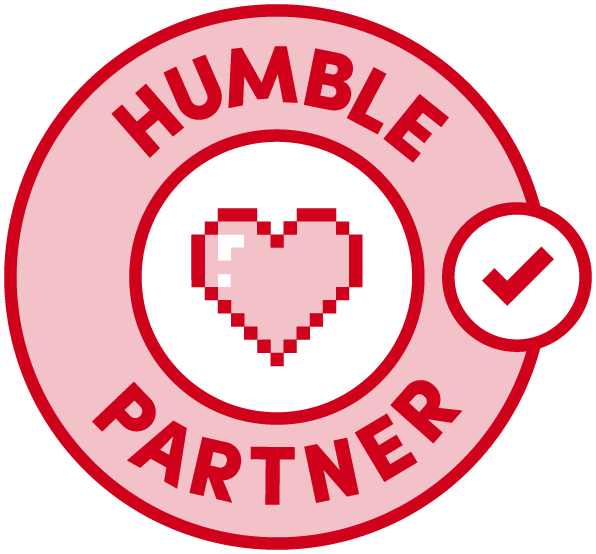BlizzCon is traditionally a fan-favorite spectacle, a raucous celebration of all things Blizzard. This year, however, controversy may flare up during the event. A series of high-profile incidents, most recently its controversial decision to ban a professional Hearthstone player for speaking out in favor of the Hong Kong protests, has given the impending event a tone of trepidation, as the community waits to see how or even if the company will openly acknowledge it.
Though this particular incident is only weeks old, high-profile changes at Blizzard and other news events had created a degree of skepticism and distrust among some in the community. At BlizzCon 2018, the announcement of the mobile game Diablo Immortal was highly controversial, especially as fans had been anticipating a long-awaited reveal for Diablo 4. Coming alongside executive departures and a new president, some felt anxious that this signaled a new direction for a company that had historically been remarkably close with its fanbase.
The Hearthstone community, too, wasn’t without its share of controversies. On July 1, Blizzard announced that as part of its update to prepare for the new Saviors of Uldum expansion, it would be changing the artwork for several classic cards, many of which had been around for years. Fans on the Hearthstone subreddit quickly noted the impacted cards were ones that showed graphic violence, especially blood, and sexuality. The community quickly posited that the changes were in deference to the heavily censored Chinese market–a theory that Blizzard quickly denied. Still, a seed of doubt had been planted regarding Blizzard’s relationship with China.
It was in that environment that the Blitzchung controversy took hold, and events unfolded extremely quickly.
Timeline of Key Events
October 6
During an interview on the official Taiwan Hearthstone stream, professional Hearthstone player Ng Wai Chung put on a ski mask and gas mask in solidarity with Hong Kong protestors, and said the slogan, “Liberate Hong Kong. Revolution of our age.”
In a statement issued the same day, Chung said: “As you know there are serious protests in my country now. My call on stream was just another form of participation of the protest that I wish to grab more attention. I put so much effort in that social movement in the past few months, that I sometimes couldn’t focus on preparing my Grandmaster match. I know what my action on stream means. It could cause me lot of trouble, even my personal safety in real life. But I think it’s my duty to say something about the issue.”
October 8
Blizzard announced its official ruling that Chung had violated its 2019 Hearthstone Grandmasters Official Competition Rules section 6.1 (o), which reads in part, “Engaging in any act that, in Blizzard’s sole discretion, brings you into public disrepute, offends a portion or group of the public, or otherwise damages Blizzard image will result in removal from Grandmasters and reduction of the player’s prize total.”
As punishment, Blizzard removed Blitzchung from the competition and rescinded his prize money, which was to be approximately $10,000. It also banned him for 12 months, to end on October 5, 2020. As part of the statement, Blizzard also announced it would no longer work with either of the shoutcasters who had been interviewing Blitzchung.
Several Hearthstone players on the official subreddit quickly said they were quitting the game permanently in protest, and a “Boycott Blizz” hashtag began trending. Blizzard employees staged a walkout in protest, and the decision was criticized by US Senators Marco Rubio and Ron Wyden, among others.
The evening of October 8, during an official collegiate event against Worcester Poly, the team from American University held up a sign reading, “Free Hong Kong. Boycott Blizz.”
October 9-10
Several professional Hearthstone players and casters voice disagreement with the severity of Blizzard’s ruling. Hearthstone caster Brian Kibler says he will no longer host or cast Hearthstone events in light of the decision. The first Hearthstone world champion, James Kostesich aka Firebat, called the decision “ridiculous” and “unreasonable,” and implied Blizzard was trying to make an example out of Blitzchung.
October 12
Blizzard issued a statement partially rescinding its previous ruling. Though it stood by the rule infraction and that a punishment was necessary, it reduced the banned period from 12 months to 6 months. It also returned Blitzchung’s monetary winnings, and reduced the punishment for the casters to 6 months.
“Playing fair also includes appropriate pre-and post-match conduct, especially when a player accepts recognition for winning in a broadcast,” read the statement from Blizzard president J. Allen Brack. “When we think about the suspension, six months for Blitzchung is more appropriate, after which time he can compete in the Hearthstone pro circuit again if he so chooses. There is a consequence for taking the conversation away from the purpose of the event and disrupting or derailing the broadcast.”
In response, the player Blitzchung accepted the decision, but did say six months still seems long. He also said he was not sure if he would return to competitive play once the banning period was over. (Blitzchung has since accepted a position on Team Tempo Storm.)
October 14
In a statement issued on Twitter, Nintendo said Blizzard cancelled a planned Overwatch for Switch launch event that had been planned for the Nintendo store in NYC. Blizzard did not comment on the event.
October 16
Blizzard banned the American University students who had protested in solidarity, matching their punishment to Blitzchung’s–six months.
October 18
A letter addressed to Activision CEO Bobby Kotick, co-signed by Senator Ron Wyden (D-OR), Senator Marco Rubio (R-FL), and House members Alexandria Ocasio-Cortez (D-NY), Mike Gallagher (R-WI), and Tom Malinowski (D-NJ) urged “in the strongest terms to reconsider” the punishment decision. Notably, the letter referenced the original punishment decision that had been partially rescinded on October 12.
What Comes Next?
Though the decision has been partially reversed, tensions in the community are still high, and Blizzard has not announced whether or not it will address the concerns at its event. One element adjacent to the festivities is trying to make sure the issue is highly visible at Blizzard’s annual fan event, planned to begin November 1. A protest being organized by the group Fight for the Future aims to organize just outside BlizzCon. The nonprofit was founded in 2011 and focuses on digital rights advocacy. In the past it has organized around issues like NSA mass surveillance and net neutrality.
At the center of the protest is Dayton Young, product director at Fight for the Future and the lead organizer behind Gamers for Freedom, a suite of advocacy steps the organization has taken in response to Blizzard. Those have included a developer scorecard for studios that have publicly committed not to take similar action, and an online day of action. GameSpot spoke with Young about what inspired the protests, how Blizzard should open its lines of communication and transparency, and its plans for the event.
The interview transcript has been lightly edited for clarity.
This controversy blew up surprisingly quickly. It was all over the news within less than 24 hours. Did that surprise you at all?
Young: I think it was surprising to all of us, how quickly and how big it blew up, but I also think it’s the appropriate response. In our messaging and in the people I’ve talked to, I’ve spoken to people who are older than I am who are still surprised to learn that one can be a professional video game player, and now they’re hearing about this thing because it’s on the news. So, given that context, I think it is a little bit surprising to see articles about this, and this very important issue being covered by a variety of major media outlets beyond just the gaming community. But I am happy that people are paying attention to it. Gaming is a worldwide phenomenon. It’s the most popular form of entertainment worldwide, and so I think it’s entirely appropriate that people are starting to pay attention to these issues that affect the gaming community and actually have a bigger impact outside of the gaming community as well.
Blizzard partially rescinded its punishment to Blitzchung on October 12, after your protest had been announced. How did that impact your protest planning?
Young: On the one hand, I was heartened that our protests were having an impact, that people were speaking up, and that this was not an issue that was going to go away, and that we had caught Blizzard’s attention and let them know that the entire gaming community was very serious about this important issue.
On the other hand, I think that the issue still remains. They’ve punished an individual for speaking out, advocating for his own freedom. They’ve done it under very loosely defined rules. I think it’s really important for us to note that gamers around the world have expressed offense at Blizzard’s punishment of Blitzchung. We’re offended that they would sensor this person for what he did. There’s been a lot of outrage. There’s been a lot of public backlash. We’ve seen members of Congress taking Blizzard’s task for their actions, so why is Blizzard not listening to all of us who are offended by their unfair censorship? Who has been offended by Blitzchung’s comments, and why is Blizzard prioritizing those people’s offense and outrage over these very vocal and very powerful members of the gaming community and US politicians? Those are questions Blizzard hasn’t answered, and I think it’s very important for Blizzard to start to engage with the gaming community in a dialogue. Everybody is speaking up, and we need to know why Blizzard isn’t listening.
It seems your implication there is, “Are they listening to China instead of us?”
Young: I would like for representatives of Blizzard to start answering these questions. We can only speculate. There’s certainly a much larger conversation going on about the Chinese government exerting influence over the NBA, South Park, and clearly over politicians and activists and things happening in Hong Kong. So, as long as Blizzard is staying silent, they’re leaving it up to us to interpret their actions and their motivations. Within this larger context, it certainly appears as though their motivations aren’t purely on upholding this very broad and poorly defined rule.
So, I think they need to clarify. When we look at traditional sports leagues, the NFL, Major League Baseball, the NBA, we’ve certainly seen a lot of protests in those different leagues over the years. We’ve seen protests at the Olympic Games. Many of these organizations have guidelines and rules in place to advise their participants and their fans on what behavior is and isn’t acceptable and where it is and isn’t acceptable. Certainly those leagues get those decisions wrong quite often. I’m not going to make apologies for some of the problems that other leagues have had. However, those leagues have given this a great deal of thought. They have more clear regulations in place. And most importantly, many of the players have a union and a means by which to approach the league and make complaints if they feel like they’ve been unfairly punished. It does not appear the Blizzard has these mechanisms in place. It does not appear that many of the gaming companies in general have these mechanisms in place and has given this a great deal of thought.
Again, we’re asking for a conversation. Games are the largest form of entertainment worldwide. It’s inevitable that we’re going to have people from many different countries, many different cultures, many different backgrounds having conversations, participating in these events together. That’s going to lead us to talk about issues that are integral to our identities and our freedoms and our basic humanity. These companies need to be prepared to address those issues in an intelligent way, in a way that gives participants a voice, in understanding what the rules are and regulations are and recourse for when we feel we’ve been wronged. I think there’s some bigger things that we need to address, and hopefully this is the beginning of those conversations.
Have plans for the BlizzCon demonstration changed at all, given the partially reversed statement?
Young: Not at all. It kicked it into overdrive. We are excited that people are listening to our protests. We are excited that people are joining the protests. We’re excited that people are starting subreddits. We’re excited that everybody is paying attention because it’s a serious issue. This is not the only time it’s going to happen. This is a part of a broader issue about censorship in online media, and it’s really, really important for us to win this fight. It’s really important for us to show up at BlizzCon. It’s very important for us to speak up and make our voices heard. Not everybody has the ability to make their voices heard, so we’re going to show up, and we’re going to show people how important it is and what an impact it can have when people all speak up and all speak out together.
What do you think would be a good first step? Do they need to make a statement at BlizzCon?
Young: I think that certainly they need to address this issue at BlizzCon. This is the biggest thing happening in regards to Blizzard as a company. It affects their future. It affects their stock price. It affects their fans. It affects the lives and well-being of people around the world. So if they fail to address this at BlizzCon, I think it will be absolutely outrageous, and I think they’ll be doing a disservice to gamers around the world, as well as everyone interested in their business. As far as how to address it, they have many avenues. They can speak to our movement. They can speak to Blitzchung. They can make public statements. They can speak to other game companies. They can speak to the press. It seems to be that Blizzard has been very silent on the issue.
They’ve been more than silent. They’ve been canceling public events as well. [Ed. This is in reference to the Overwatch event planned for the Nintendo Store in NYC.] They’re not just staying silent, they’re actually withdrawing. And certainly that’s not going to get us to stop. That’s not going to get us to not protest. That’s not going to get us to stop sharing our voices and stay silent.
What would you like to see from Blizzard, in terms of public communications about these decisions?
Young: I think being able to have someone who can participate in these conversations we’ve talked about is going to be a very important step. We talked about different leagues previously and player’s unions. Can we organize player’s unions so that players have a representative to speak for many of their concerns? And can they have somebody at the league offices or at the company offices they can speak to about these concerns? Certainly there’s a lot of precedent in other sports for how to handle these issues. Again, I don’t think that every other league has handled these issues in a positive way in every situation, but I think that companies involved in e-sports should certainly take a look at what’s been done historically and try to take the best pieces of those systems and apply them to their own e-sports leagues.
If someone were to show up to the protest at BlizzCon, what would they see?
Young: We’re a big, friendly group of people. We are very outraged about what’s been going on, but we’re doing this out of love for everyone. We’re doing this to support those who are advocating for their own freedom, and we’re doing this to help people. So, I think what you’re going to see is a big crowd of people who really care about other gamers and who are speaking up to make a difference and to make gaming safer for everyone to participate in.
Do you have any kind of resource document that covers the dos and don’ts of protesting? How do you plan to keep people at a mass protest safe?
Young: There’s a handbook that’s linked to on GamersforFreedom.com. We have discussed the protest with the Anaheim Police Department, with the ACLU. Our goal is to make this a safe and successful protest. There is information in the handbook. But, again, we’re going to be protesting legally, and we’re going to be having a great time, and we hope to see everybody there.
from GameSpot – Game News https://www.gamespot.com/articles/blizzcon-protest-how-we-got-here-and-what-you-need/1100-6471040/




